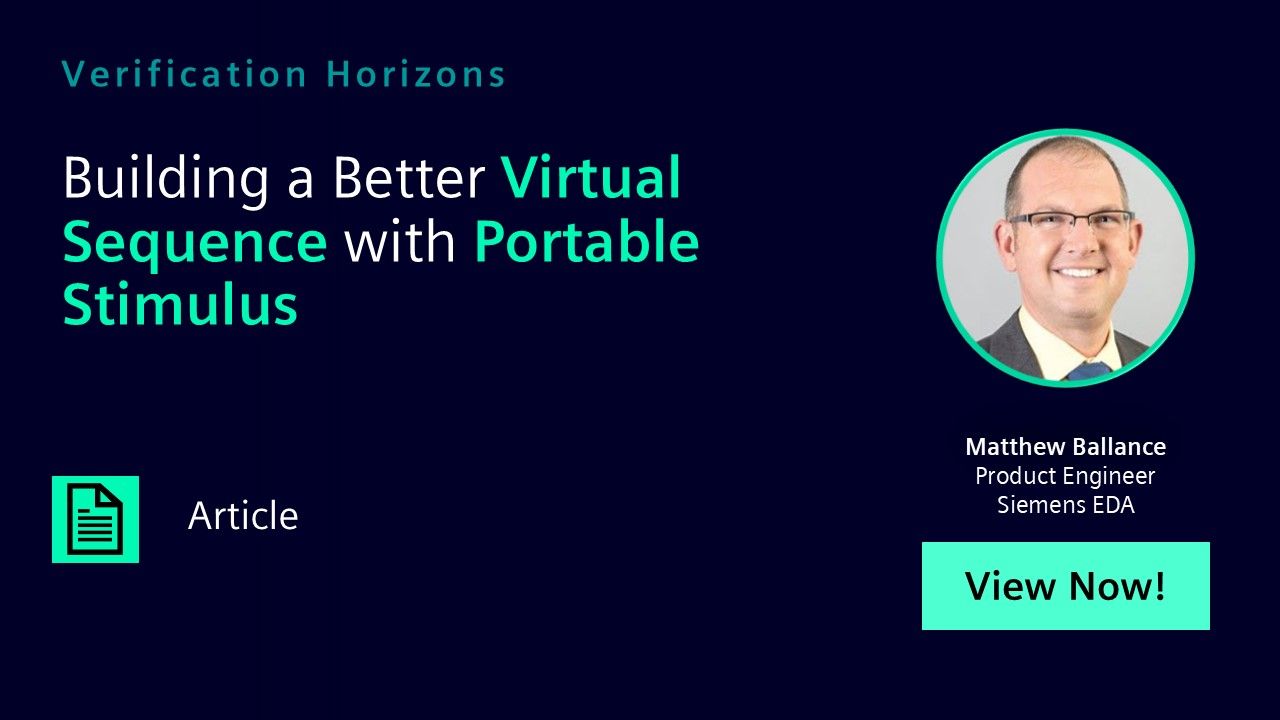Building a Better Virtual Sequence with Portable Stimulus
When using the Universal Verification Methodology (UVM), sequences are the primary mechanism by which stimulus is generated in the testbench. Sequences come in two flavors: simple sequences for driving a single interface, and virtual sequences that control more complex behavior. Simple sequences tend to work with a single sequence item, while virtual sequences often spawn off multiple sub-sequences to accomplish their intended task.

Full-access members only
Register your account to view Building a Better Virtual Sequence with Portable Stimulus
Full-access members gain access to our free tools and training, including our full library of articles, recorded sessions, seminars, papers, learning tracks, in-depth verification cookbooks, and more.